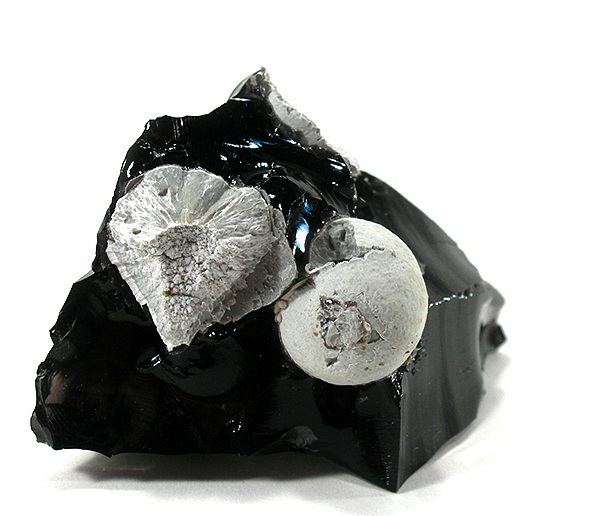Strunz classification 4.DA.15 | Formula(repeating unit) SiO2 Dana classification 75.1.1.1 Crystal class Trapezohedral (422) | |
 | ||
The mineral cristobalite is a high-temperature polymorph of silica, meaning that it has the same chemical formula as quartz, SiO2, but a distinct crystal structure. Both quartz and cristobalite are polymorphs with all the members of the quartz group, which also include coesite, tridymite and stishovite. Cristobalite occurs as white octahedra or spherulites in acidic volcanic rocks and in converted diatomaceous deposits in the Monterey Formation of the US state of California and similar areas. Cristobalite is stable only above 1470 °C, but can crystallize and persist metastably at lower temperatures. It is named after Cerro San Cristóbal in Pachuca Municipality, Hidalgo, Mexico.
The persistence of cristobalite outside of its thermodynamic stability range occurs because the transition from cristobalite to quartz or tridymite is "reconstructive", requiring the breaking up and reforming of the silica framework. These frameworks are composed of SiO4 tetrahedra in which every oxygen atom is shared with a neighbouring tetrahedron, so that the chemical formula of silica is SiO2. The breaking of these bonds required to convert cristobalite to tridymite and quartz requires considerable activation energy and may not happen on a human time frame. Framework silicates are also known as tectosilicates.
There is more than one form of the cristobalite framework. At high temperatures, the structure is cubic, Fd3m, No.227, Pearson symbol cF104. A tetragonal form of cristobalite (P41212, No. 92, Pearson symbol tP12) occurs on cooling below ca. 250 °C at ambient pressure, and is related to the cubic form by a static tilting of the silica tetrahedra in the framework. This transition is variously called the low-high or
The cubic β phase consists of dynamically disordered silica tetrahedra. The tetrahedra remain fairly regular and are displaced from their ideal static orientations due to the action of a class of low-frequency phonons called rigid unit modes. It is the "freezing" of one of these rigid unit modes that is the soft mode for the α–β transition.
In the α–β phase transition only one of the three degenerate cubic crystallographic axes retains a fourfold rotational axis in the tetragonal form. The choice of axis is arbitrary, so that various twins can form within the same grain. These different twin orientations coupled with the discontinuous nature of the transition can cause considerable mechanical damage to materials in which cristobalite is present and that pass repeatedly through the transition temperature, such as refractory bricks.
When devitrifying silica, cristobalite is usually the first phase to form, even when well outside of its thermodynamic stability range. The dynamically disordered nature of the β-phase is partly responsible for the low enthalpy of fusion of silica.
The micrometre-scale spheres that make up precious opal exhibit some x-ray diffraction patterns that are similar to that of cristobalite, but lack any long-range order so they are not considered true cristobalite. In addition, the presence of structural water in opal makes it doubtful that opal consists of cristobalite.
